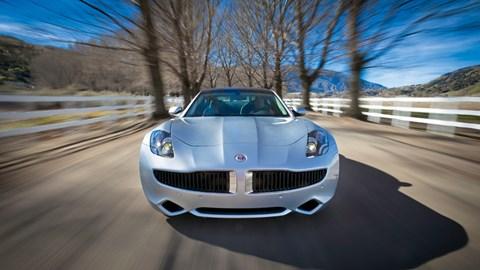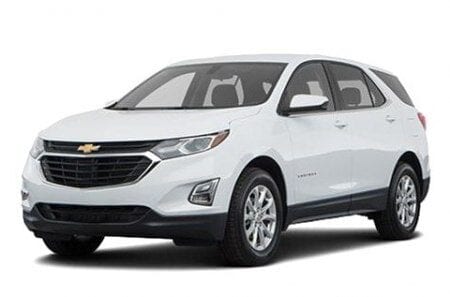
Fisker Karma 2011 Obzor
If Henrik Fisker gets his way, the car of environmentally conscious Hollywood stars will be his new electric car. What about the Toyota Prius, popular with the likes of George Clooney and Julia Roberts? Nah, too boring. And the Chevy Volt? Lacks style.
Discover the all-new Fisker Karma, the world's first true electric vehicle with extended range. And, damn it, this multi-talented young man was in a unique position.
The all-new American limousine not only boasts Mercedes-level luxury and BMW-level handling wrapped in a sleek exterior worthy of a Maserati badge, it also boasts some of the most environmentally friendly performance.
With 300kW of power, this 4-seat 4-door sedan produces cleaner CO02 emissions and better mileage than the Prius. And we're in sunny Southern California to host the first editions.
So how did this potential tipping point come about? In 2005, Danish-born company CEO Henrik Fisker and his business partner Bernhard Köhler began restoring Mercedes and BMW convertibles at Fisker Coachbuild, until a chance meeting with Quantum Technologies changed everything. The government awarded an alternative energy company a contract to develop a "stealth" vehicle for the US military that could be dropped behind enemy lines, move forward only on electric "stealth mode" and then retreat powered.
But before we get ahead of ourselves, we should note that Fisker doesn't just lead the company as its CEO. He, it turns out, is also the chief designer. And when you consider that his previous work has included the creation of the Aston Martin DB9, the V8 Vantage and the BMW Z8, it's easy to see where Karma's European design flash came from. With certain design hints from Aston Martin and Maserati, first impressions are that this car may be the most beautiful sedan penned on American soil since the 70s.
However, sheet metal is just the icing on the cake. What's mounted on a custom-made Karma aluminum spaceframe chassis pushes the boundaries of electric vehicle drivetrain. The vehicle, co-developed with Quantum Technologies, uses the powertrain inspired by the stealth military vehicles we mentioned above: twin 150kW rear electric motors and a lithium-ion battery. After discharging the battery, after about 80 km, the 4-cylinder 255-liter turbocharged petrol engine with 2.0 hp. manufactured by GM drives a generator that recharges the batteries. Fisker's patented "EVer" (Extended Range Electric Vehicle) setting guarantees a range of up to 80 km on electric vehicle alone and about 400 km with motor, for a total of more than 480 km of extended range.
On the track, it soon became apparent that Fisker's team was serious. Hit the start button, select D from the little PRNDL pyramid on the center console, and the car will put you in the default or EV-only "Stealth" mode. You have the option to flick the stalk to select "Sport" and turn on the engine for more power, but more on that later.
As we pulled into the track at around 30km/h, we noticed (as did the Nissan Leaf) that Fisker had installed an artificial sound to alert pedestrians to Karma's presence. Chill. Then we pressed the gas pedal. 100% available torque instantly. That's 1330 Nm of torque, a figure only eclipsed by the mighty Bugatti Veyron. It's not explosive acceleration, but it's fast enough to please most drivers. Despite the Karma's unreasonable curb weight of 2 tons, it accelerates from standstill to 100 km/h in 7.9 seconds and reaches a top speed of 155 km/h (in Stealth mode).
It only took one lap around the dedicated street circuit to make sure the Karma handled like a damn capable sports car. A double-wishbone suspension with forged aluminum arms and self-adjusting rear shocks helps the Fisker EV take first place in its class for handling on the road. Cornering is sharp and precise, with well-weighted steering and almost no understeer at the limit.
The extra-long wheelbase (3.16m), wide front and rear track, low center of gravity and huge 22-inch Goodyear Eagle F1 tires work together perfectly to keep the Karma flat in corners while causing minimal body roll under full braking. Type grip is essential, but the back will slide and be easy to catch. Oh yes, and its 47/53 weight offset front and rear won't hurt the handling equation either.
The only problem we had was with the sound. Wind and road noise suppression is well implemented. In fact, they are so well insulated that you can hear sounds coming from the body as the car flexes around corners. Now the fact that we're also driving in silent Stealth mode only seems to exacerbate these sounds until, that is, we toggle the steering wheel-mounted switch from Stealth mode to Sport mode. Suddenly, the silence is broken by the engine, which comes to life with a rather loud and raspy exhaust sound, spewing red through pipes located just behind the front wheels.
The first thing you'll notice, aside from the audible exhaust sound and turbo whistle, is the extra power. The engine-powered alternator not only charges the battery, but also improves the performance of the lithium-ion battery, which in turn increases acceleration by a noticeable 20-25%. This switch to Sport mode now allows the car to accelerate from zero to 100 km/h in 5.9 seconds, while the top speed increases to 200 km/h.
Brembo 6-piston brake system with 4-piston rear, pulls up superbly and resists wear. Brake pedal stiffness is firm and progressive, while pressing the right paddle lets you engage Hill mode and choose from three levels of regenerative braking, a feature that mimics the effects of downshifting.
A $529 million infusion from the Department of Energy allowed him to buy a former GM plant in Delaware, where the next car, the cheaper and more compact Nina, would be built. It will also allow Fisker to expand on his "responsible luxury" theme, with this green company using reclaimed wood from the California wildfires and from the bottom of Lake Michigan, as well as damaged leather.
Another novelty is the Fisker command center on the center console. It features a huge 10.2-inch force-feedback touchscreen that centralizes almost all vehicle controls. And it's easy to use. In addition, the command center can display energy flow, including energy from rooftop solar panels that can generate enough power to drive a car 300 km in a year.
Created alongside Porsche Caymans in Finland, the Karma may only be released three years ago, but the signs are certainly clear. Made only in left-hand drive, the first Fisker model will not see our shores. We'll have to wait for his next electric car, the smaller Nina, which is expected around 2013. Our short drive convinced us that the Karma has many benefits, from stunning looks, unique professional engineering, superb handling and an eco-friendly powertrain that sets new standards in CO2 emissions and mileage. The audible internal squeaks and loud exhaust sound need to be addressed, but this should be resolved in the very near future.
The fact that this $3,000 (base price) car has already received more than 96,850 orders indicates a potential market for customers ranging from Porsche and Mercedes buyers to eco-driving enthusiasts like Leonardo and Cameron , George and Julia and Brad and Tom. Hmmm, I wonder who will be the first to walk the red carpet for Academy night in stealth mode.

